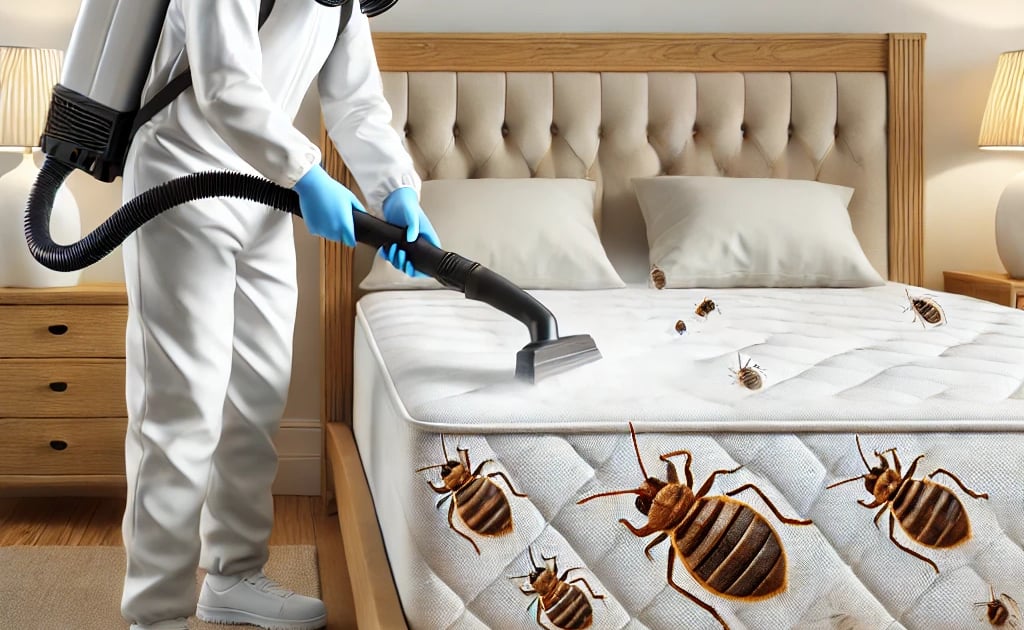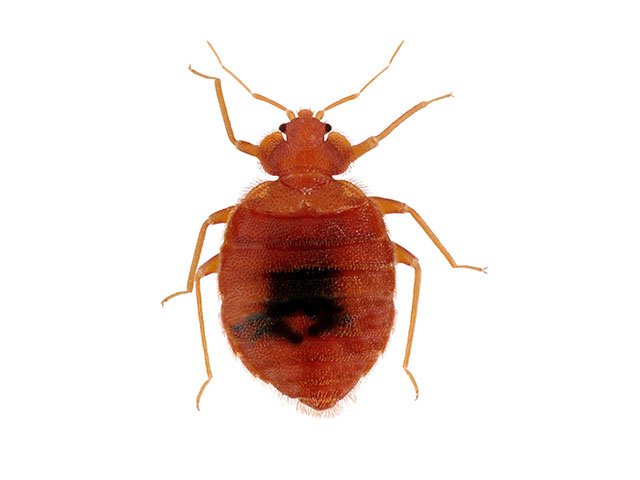Bed Bug Eggs Removal: Expert Solutions to Prevent Reinfestation
Bed Bug Eggs Removal: Expert Solutions to Prevent Reinfestation
Blog Article
Obtain Educated About the Sorts Of Bug Control Approaches and Their Advantages for Home Owners
Comprehending the various pest control approaches available to property owners is important for reliable bug management. From chemical and organic methods to social and mechanical practices, each approach offers special advantages that can significantly affect both wellness and environmental security. House owners who are knowledgeable can make critical selections that not only address insect problems however additionally improve the general quality of their living setting. As we check out these techniques better, it comes to be clear that the decision-making process involves even more than simply immediate results; it touches on long-term sustainability and health. What variables should influence these essential choices?
Chemical Pest Control Methods
Chemical bug control methods are an essential part of integrated pest management approaches for home owners looking for reliable services to pest infestations. These techniques include the application of chemical substances designed to remove or hinder parasites that endanger individual building, health, and convenience. Typical chemicals used consist of pesticides, fungicides, rodenticides, and herbicides, each tailored to target specific pests.
The key benefit of chemical bug control is its rapid performance; numerous formulas provide immediate outcomes, decreasing pest populaces considerably quickly. Furthermore, breakthroughs in chemical formulas have resulted in items that are a lot more eco-friendly and have lower poisoning levels for non-target microorganisms when applied correctly.

Organic Insect Control Strategies
Natural insect control techniques have gotten prestige as house owners seek much safer and more lasting choices to typical chemical approaches. Biological insect control methods use natural killers, parasites, or microorganisms to manage parasite populations successfully. This approach is not only eco-friendly however additionally lessens the danger of injury to non-target varieties, consisting of advantageous insects and wildlife.
Among one of the most common organic control methods includes introducing natural predators into the atmosphere. Ladybugs can be used to manage aphid populaces, while nematodes target soil-dwelling parasites like grubs. In addition, parasitoids-- organisms that live on or within a host-- can be employed to manage specific parasite types by laying eggs inside them, eventually resulting in their death.
An additional technique is the use of biopesticides, which are stemmed from all-natural materials such as minerals, germs, or plants (bed bug exterminator). These products can efficiently target parasites while posturing very little risk to family pets and people. In general, organic insect control strategies supply property owners with an effective ways of bug administration that lines up with eco-friendly concepts, advertising a healthier living atmosphere while minimizing dependence on synthetic chemicals
Mechanical Bug Control Approaches
Mechanical pest control strategies include a variety of methods that literally protect against or get rid of insects without making use of chemicals. These strategies are specifically advantageous for home owners seeking eco-friendly options while ensuring the safety of their home.
One common method is that site using obstacles, such as screens, internet, and catches, which protect against parasites from getting in homes or specific areas. For example, installing window screens can successfully keep insects out, while using physical obstacles around yards can discourage larger parasites like deer or rabbits. Furthermore, mechanical traps developed for rodents can record and get rid of these parasites without the requirement for toxic substances.
One more effective strategy includes making use of brooms and vacuums to eliminate pests directly from surface areas. Routine cleansing and upkeep can significantly reduce insect populations by getting rid of food sources and hiding places. Moreover, utilizing tools like ultrasonic bug repellents can deter numerous insects via acoustic wave that are unpleasant to them yet faint to human beings.
Social Insect Control Practices
Cultural parasite control methods concentrate on modifying the atmosphere and management techniques to produce conditions that are less for pest infestations. These techniques are basic in maintaining a balanced environment and minimizing the reliance on chemical interventions. By altering agricultural techniques, homeowners can properly discourage pests while advertising plant health and wellness.
One typical strategy includes crop turning, which interferes with the life process of insects by altering the sorts of plants grown in a certain location (bed bug exterminator). This not only lessens pest populaces but additionally boosts soil wellness. Additionally, intercropping-- planting diverse crops in distance-- can perplex pests and decrease their ability find out this here to locate their preferred host plants
Water management is another vital element of social techniques. Proper watering techniques can stop standing water, which serves as a reproduction ground for mosquitoes and various other bugs. Preserving tidiness in and around the home, such as regularly eliminating particles and food waste, can substantially decrease pest destination.
Integrating these cultural techniques into an extensive parasite monitoring method allows house owners to produce an atmosphere that naturally discourages insects, thus improving the efficiency of other control techniques while promoting lasting gardening and landscaping.

Integrated Pest Monitoring Approaches
Integrated Bug Management (IPM) stands for a holistic strategy that incorporates various strategies to effectively take care of insect populations while lessening environmental influence. This approach incorporates organic, social, physical, and chemical techniques to achieve lasting parasite control. By assessing pest populaces and their all-natural adversaries, IPM highlights tracking and recognizing insects before applying control procedures.
Among the core concepts of IPM is making use of limits, which develop the level of parasite activity that requires intervention. This makes certain that therapies are used only when needed, minimizing the dependence on chemical pesticides. Biological control techniques, such as introducing natural predators or bloodsuckers, work in conjunction with social techniques like crop turning and habitat control to interfere with pest life process.
In addition, IPM encourages making use of least-toxic chemical choices when treatment is essential, focusing on products that pose very little risk to non-target microorganisms and the atmosphere. For property owners, taking on IPM comes close to not just improves the effectiveness of insect administration yet also promotes a healthier living setting, promoting biodiversity and minimizing chemical direct exposure. Eventually, IPM equips home owners to make educated decisions that balance pest control with environmental responsibility.
Conclusion
Finally, understanding the numerous bug control techniques equips homeowners to make enlightened decisions pertaining to pest administration. Each method-- chemical, biological, mechanical, social, and integrated pest monitoring-- supplies distinct advantages that accommodate various needs and preferences. By picking suitable strategies, home owners can successfully manage parasite populaces while lessening wellness threats and ecological effects. This informed method adds to a much healthier living atmosphere, promoting general health for households and family pets alike.
Recognizing the different pest control approaches readily available to property owners is essential for efficient parasite administration.Chemical parasite control approaches are a vital component of integrated pest control training parasite monitoring methods for house owners looking for reliable services to pest invasions. Overall, biological insect control techniques provide home owners with a reliable means of bug monitoring that aligns with environmental concepts, advertising a healthier living atmosphere while lowering dependence on synthetic chemicals.
Cultural parasite control techniques concentrate on customizing the setting and monitoring methods to create problems that are much less conducive to pest infestations.In conclusion, understanding the different pest control methods empowers house owners to make enlightened choices relating to pest management.
Report this page